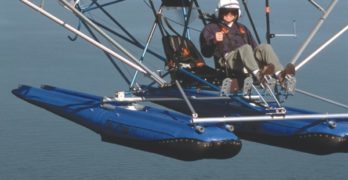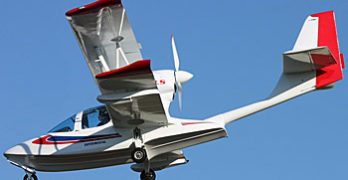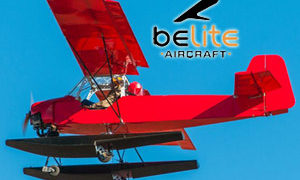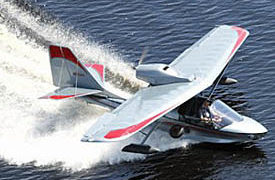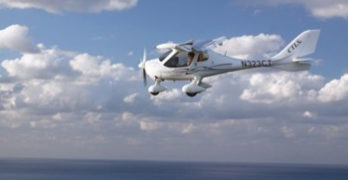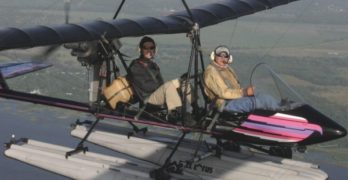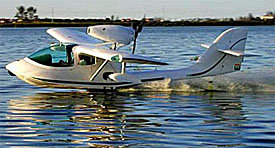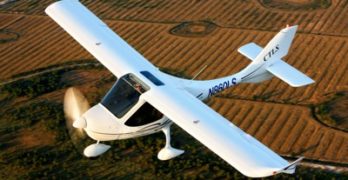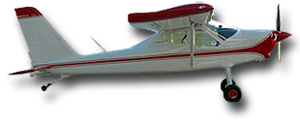“It’s still the best,” is a phrase I could use referring to Quicksilver’s most-popular-of-all ultralights in general, the Sport 2S. Indeed it remains a delightful aircraft and the strutted construction appeals to many pilots. Or, I could be referring to flying an ultralight on floats, that being one of the very best ways to enjoy an ultralight. Or, I could be talking about both. You’ll want to read on and see.
I might also be talking about the strutted version of the venerable Quicksilver model being the best of the design series. Or, I might be talking about the innovative company representing the Quicksilver 2S on floats in central Florida. Every one of these statements is accurate in one way or another.
It was my pleasure to fly the Sport 2S on Full Lotus floats and it surely was a dandy experience. Is it the best? Well, it might be for you.
Search Results for : floatplane
Not finding exactly what you expected? Try our advanced search option.
Select a manufacturer to go straight to all our content about that manufacturer.
Select an aircraft model to go straight to all our content about that model.
Summer Is Here; Flying the Edra Super Petrel LS
Winter has finally released its icy grip on the northern states that were so punished over the past few months. Here in the “Sunshine State” of Florida, it feels like summer. So what do pilots do in the summertime, in Florida? Go fly seaplanes, of course? What else? Indeed, quite a flock of seaplanes and floatplanes converged on the central Florida city of Tavares, about 45 minutes driving time northwest of Orlando. Appropriately, the area is known as “lakes district” for all the bodies of water. City leaders portray the Tavares as “America’s Seaplane City” and to reinforce that, they have developed their lakefront to include a very welcoming seaplane base with bigger plans underway. On Saturday, April 26th more than 40 seaplanes flew in for the event. One of those was Edra Aeronautica’s Super Petrel LS, one of the newest Special LSA in the fleet. My friend and Spruce Creek Fly-in neighbor, Brian Boucher, is the North American representative for this interesting seaplane and I finally got my first flight in it.
Single Seat SeaLite Amphibian from Belite Flies
It seems like we discuss seaplanes (the boat hull variety of airplanes) more than floatplanes (land planes with floats added). Rare are any of these a single seater and one that might fit in Part 103 for ultralight vehicles (meaning no pilot license, no medical, and no N-numbers are required). Yet some like the flexibility afforded by removable floatation. Many buyers seek lower price tags and most pilots tend to fly solo more than with passengers (even when four or more seats are available). So, perhaps you should consider Belite Aircraft airplanes especially now that ever-inventive developer James Wiebe has transformed his single seater into an amphibious floatplane called SeaLite. The new model is getting closer to delivery. “The first flight of our amphibious, carbon fiber, float-equipped aircraft falls on 110th anniversary of Wright Brother’s first flight,” said James about his voyage aloft on December 17th.
“Although today’s test flight was from a conventional grass runway, the expanded test plan will soon demonstrate takeoff and landing operations from water as well,” clarified Weibe.
Seaplane Tsunami — Water-Borne Flying Fun
Once upon a time, in the early days of Light-Sport Aircraft, way back in 2006 and 2007, new LSA models were being introduced at the torrid pace of two, three, even four per month. Aviation had no prior design outpouring to compare. The rate of development had to slow — such a pace is not sustainable — and it did. Yet the young industry continued on to the astonishing sum of 131 models and it ain’t over yet. Meanwhile, though, a new tsunami is building within the LSA sector. I’ve written about a wave a new seaplanes and as summer 2013 approaches, a tour of the many choices may help guide interest of seaplane enthusiasts.
Current Seaplanes (distinguished from float-equipped land planes *) include FAA-accepted SLSA models: Mermaid, SeaMax, SeaRey, and Freedom. At present all are being offered and have some measure of U.S.
LSA Industry On Life Support…ummm…Nah.
In a recent article from Flying Magazine, an editor volunteered his opinion that the Light Sport industry is on life support. There are so many good arguments to refute such a sky-is-falling assessment, it kind of makes you wonder why a respected journalist would go out of his way to attract a lot of heat in the first place … but that’s another story.
Dan Johnson makes a ton of solid rebuttal remarks in this article and in a video he did with UltralightFlyer.com — check those out.
Meanwhile, here’s a magnificent retort to the LSA-is-dead silliness: Airtime Aviation out of Tulsa, OK. Owners Tom Gutmann and his son Tom Jr. just delivered their Number 100 Flight Design airplane, a new CTLSi with a fuel injected Rotax 912 iS engine.
At Sebring I saw a bunch of installations of the new engine: it’s really catching on.
Super Drifter 912 Is Back Home
Things can change and yet stay the same. You can comprehend this paradox by considering the tandem 2-seat Drifter. Drifter production is under new management by someone many regard as a “rightful owner.” Yet the basic flying qualities of the Drifter design are basically unchanged.
As 2007 started, Phil Lockwood again has all rights to the Drifter as part of a design, tooling, and inventory deal that rescued the Drifter and 2-seat twin-engine Air Cam from an uncertain future with investor Antonio Leza, who ran the operation for a few years.
Lockwood is associated with the Drifter due to his many years of work with the design. He once worked for Maxair proprietor Denny Franklin who pioneered this enduring shape. In the rough and tumble days of early ultralights, Franklin lost control of Drifter ownership and for a time the design wandered. More correctly, the new owners failed to take the Drifter forward and instead merely exploited its popularity.
Wheels-DOWN Water Landing!
I posted this in a comment to my *** SeaMax story yesterday after finding it on an Aussie website. One of the big no-no’s in traditional floatplanes and perhaps (I honestly don’t know) traditional amphibs like the Lake Amphibian and others is landing with the wheels down. On a float plane, it can cause a disastrous nose-over. *** This test was done, guessing from the language, in Brazil during the SeaMax‘s development or perhaps it was a production model. *** Anyway, I thought this was very cool and wanted to share it with you. ***
LSA Seaplane Invasion …Can It Happen?
What’s going on out in the marketplace? More than any time since the launch of Light-Sport Aircraft in 2004, I have not observed such a frenzy of activity for a particular niche, this time for LSA seaplanes. Next season, in 2013, we could see no less than nine entries; three brand new and that count does not include any LSA equipped with floats, possibly adding several more. Yet some major potholes appear in the runway… or perhaps that should be waves sloshing over the bow.
One entry is a return of a LSA seaplane previously seen in the USA as the Freedom S100 (SLSA List #44) yet can it reenter the market without a full FAA audit? See Update at end. A new agency directive with the catchy name 8130.2G CHG 1 may require a FAA visit to Spain but who knows when that might occur, given the likelihood of an FAA budget cut through the political process known as sequestration, part of the so-called “fiscal cliff” the mainstream media drones on about endlessly.
Light-Sport Aircraft… What? How? Why?
Light-Sport Aircraft are the newest category of aircraft as defined by FAA, the government regulatory agency for aviation. The new breed of aircraft – 109 models in just five years of astonishingly rapid development – offer affordable purchase prices, low cost of operation, spacious interiors, the latest instrument innovations, energetic performance and lively handling. Every one of these new airplane meets new industry standards.
Any Light-Sport Aircraft (LSA) must fit within the following parameters: A maximum of two occupants, a maximum take-off weight of 1,320 pounds (seaplanes can weigh 1,430 pounds); a 45-knot clean stall speed; a 120-knot top speed at maximum continuous power; a single, non-turbine engine; and fixed landing gear (though amphibious floatplanes can have “repositionable” gear). Some are called Special Light-Sport Aircraft (SLSA) if they are fully manufactured and ready-to-fly. A manufacturer can also offer a kit aircraft based on the SLSA; it’s called an Experimental LSA or ELSA.
Tecnam’s Design Juggernaut; Do These Guys Sleep?
In the article just before this one, writer Jim Lawrence told you about Tecnam’s new Sea-Sky Hydroplane option of straight or four-wheel composite amphibious floats for the Echo Classic or Eaglet models. For the Echo, also known as the P92 (referencing 1992), this represents the sixth generation of that model. The all in-house-designed Sea-Sky Hydroplanes will not be at Sebring but should be present for Sun ‘n Fun, according to importer Tecnam North America. *** As late-night TV ads shout, “But there’s more…!” *** Tecnam will also introduce their brand-new taildragger version of the venerable Echo, done in what Phil Solomon calls a “retro style,” with a wood panel and other touches. Along with thicker gear legs, larger tires and wheels, chrome joystick and chrome rudder pedals plus the sexy slant of a taildragger — Tecnam’s first — the new Echo Taildragger does appear a throwback to an earlier, enjoyable age of aviation.
- « Previous Page
- 1
- 2
- 3
- 4
- 5
- 6
- …
- 8
- Next Page »


